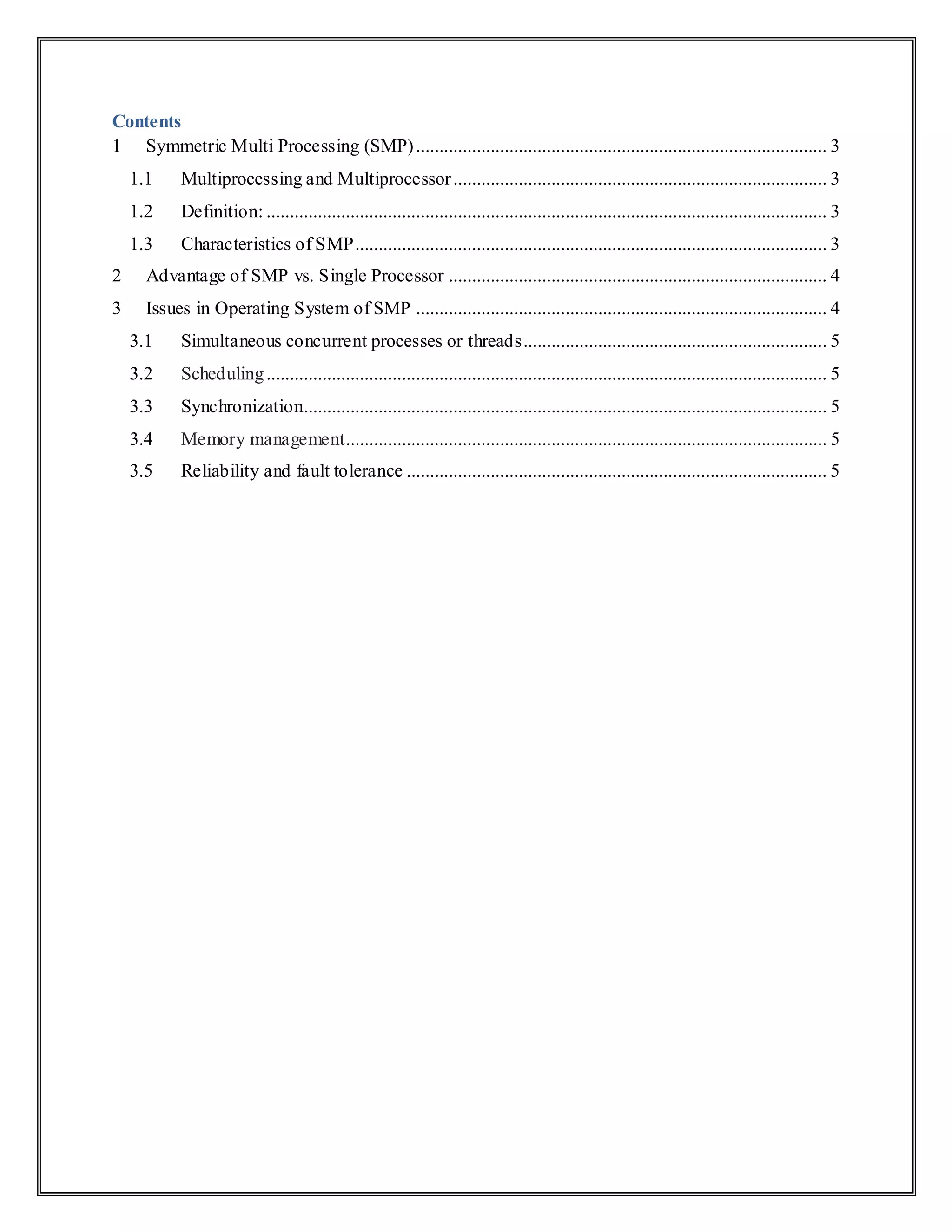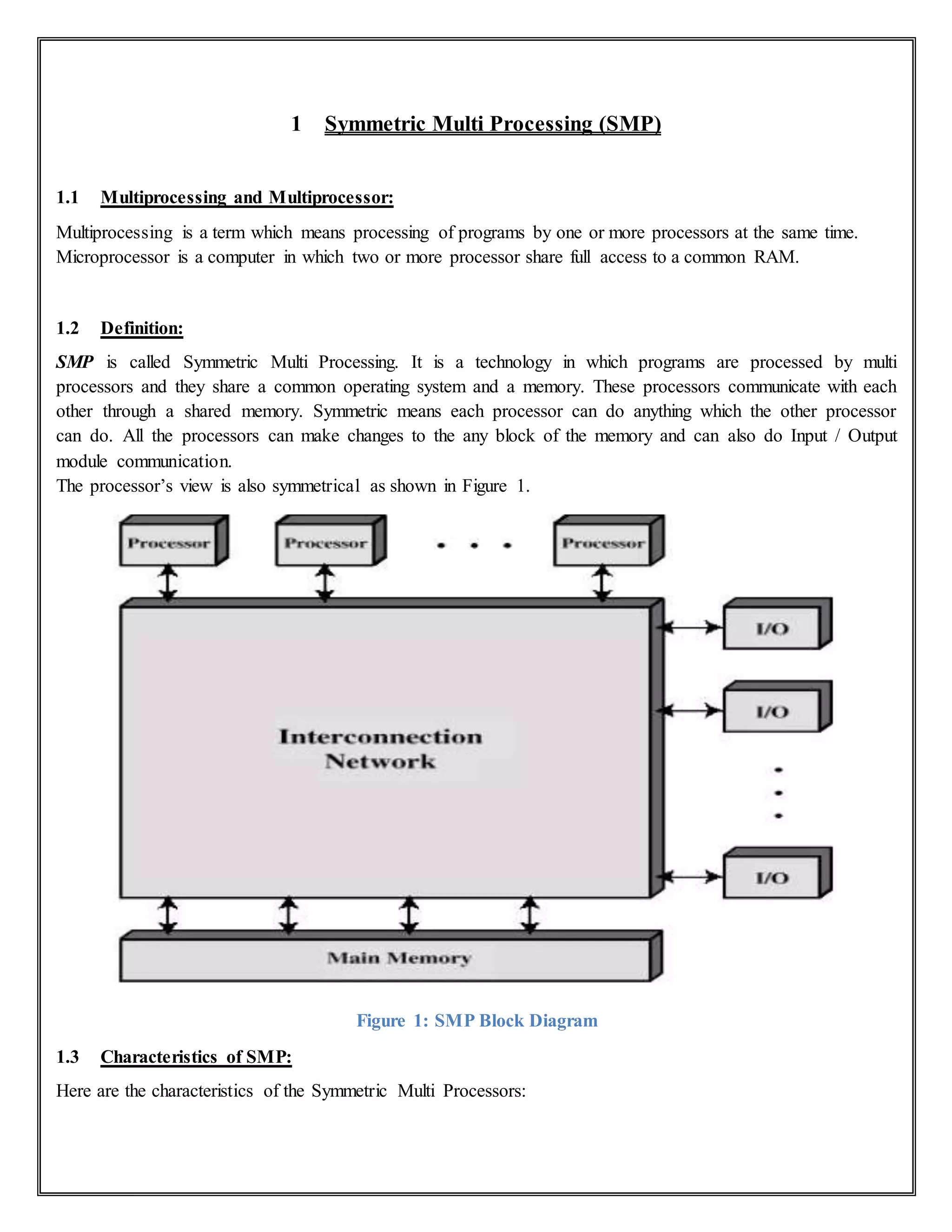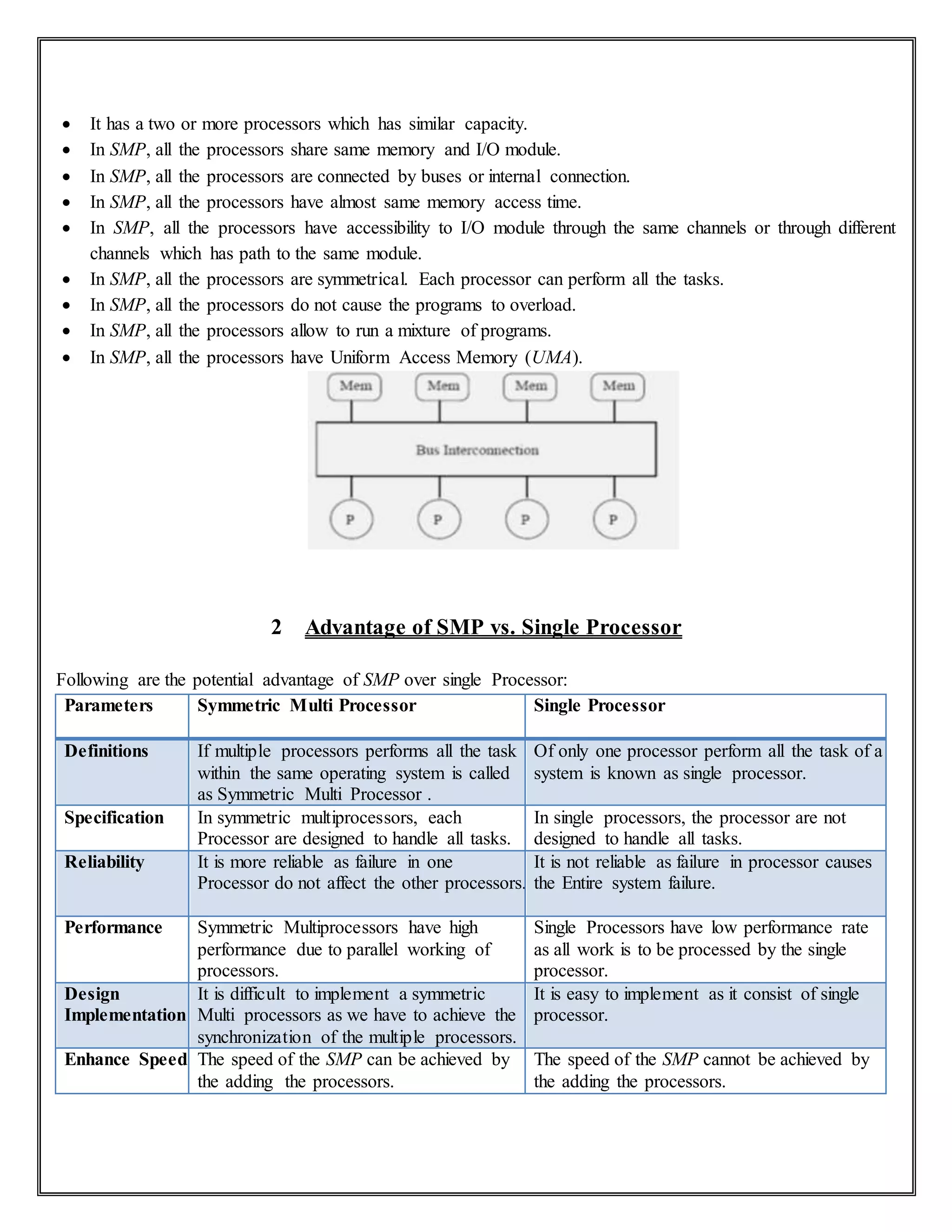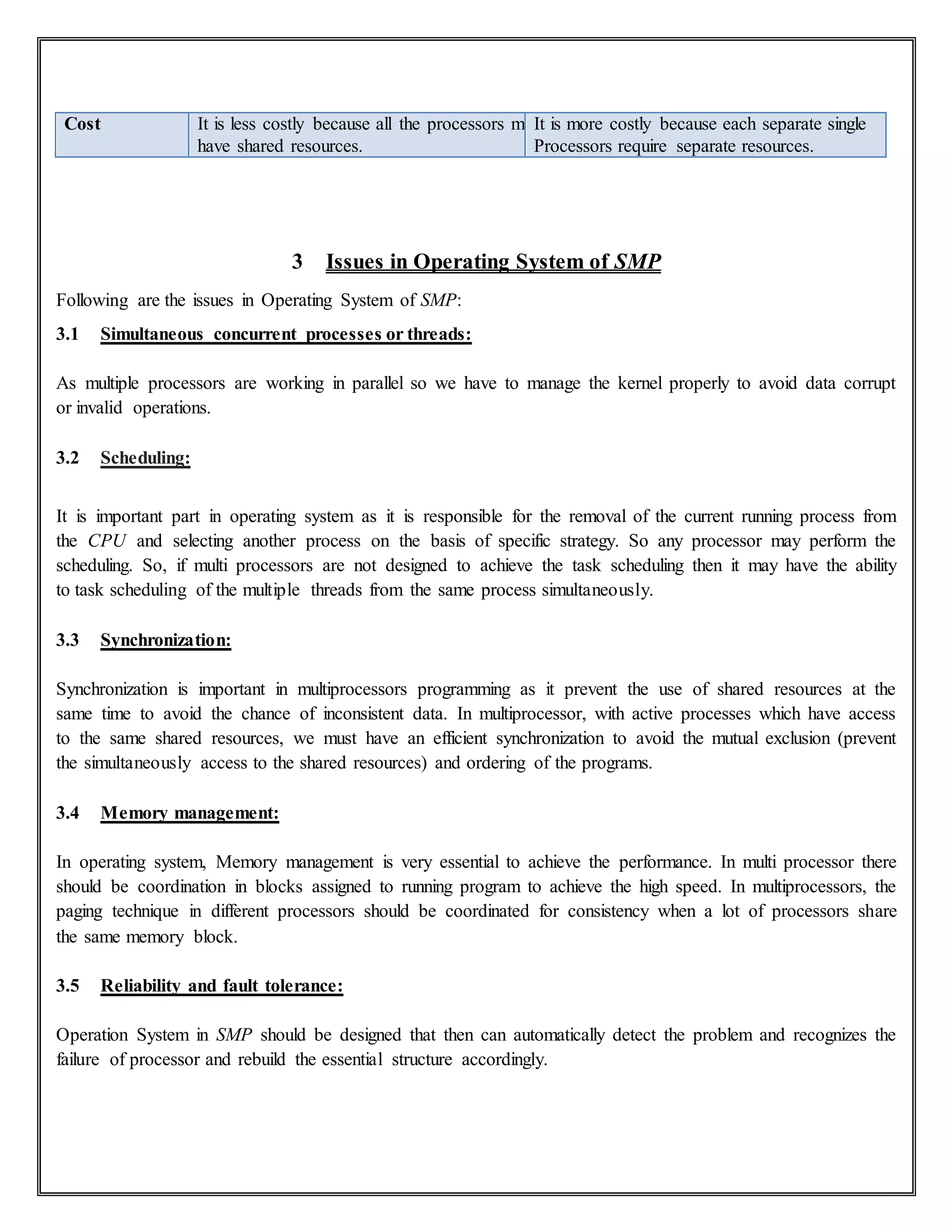The document discusses Symmetric Multi-Processing (SMP), a technology where multiple processors share a common operating system and memory, allowing for parallel processing. It outlines the characteristics, advantages over single processors, and issues related to the operating system, including scheduling, synchronization, and memory management. Key benefits of SMP include higher performance, reliability, and cost-effectiveness compared to single-processor systems.




